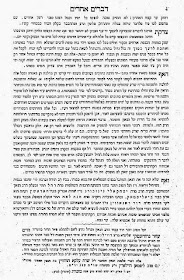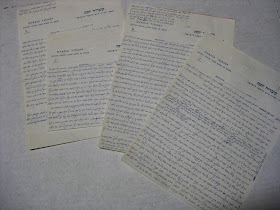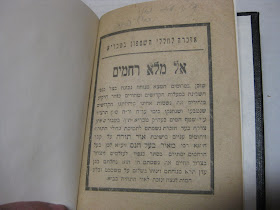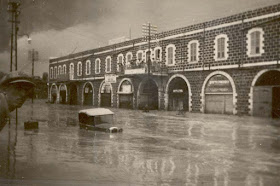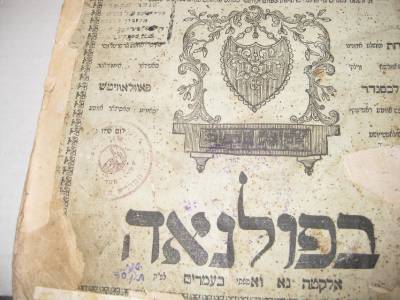Rabbi
Yisrael Salanter had several children, including the mathematician
Yom Tov Lipman Lipkin, and Rabbi Aryeh Leib Horowitz. R. Horowitz used the last name of his mother, presumably because his parents were not legally married, a common occurrence with Jews in Eastern Europe at this time in history.
Aryeh Leib Horowitz (died 1896) authored several works which he left in manuscript, and his widow took it upon herself to publish his works, under the title of Haye Aryeh. The volume below was published in Vilna in 1907, with a lengthy introduction by his widow, Sarah Elka Horowitz, herself a daughter of the author of Oneg Yom Tov, R. Rephael Yom Tov Lipman Heilpern. She ends the introduction with thanks to R. Chaim Ozer Grodzinski, who married the author's niece, a granddaughter of R. Yisrael Salanter.
The introduction is a fascinating read, and her love and respect for her husband screams out between the words, quite a feat and unfortunately rather unusual for someone who spent nearly her entire life with the author. She appears to be fluent in Rabbinic terms and life in the Rabbinic world. It is worth reading in it's entirety, but here are some parts in her introduction which stand out to me:
בן לאותו צדיק קדוש ישראל ששמו הולך מראש העולם ועד סופו
He was a son to that righteous man Yisrael (Salanter), whose name traveled from one end of the world to the other
לא אוכל לעבור הפעם בשתיקה הפעם מלספר לדור אחרון מעט מזער מפרשת גדולתו וצדקותו של הגאון המחבר ז"ל בתורה וביראה האף אמנם לא תכיל גם מחברת שלמה פרטי מעשיו הטובים כח תורתו וצדקתו גם ידעתי כי לא לי להעריך ערכו וגדלו אולם רק השקפה כללית קצרה הכוללת דמות דיוקנו של אישי הרב ז"ל ואך דברים אחדים בתור פתח דבר לספרו זה....
I can not pass this time in silence and withhold from speaking to later generations a minute fraction of the story of the greatness and righteousness of the genius, the author, in his Torah and fear of G-d. Even though an entire notebook won't contain the individual's great deeds and the power of his Torah and righteousness, and I also know that it is not befitting me to value his worth and greatness, but just a small portrait of my great husband, the Rabbi ob"m, just small things to serve as an opening to this book of his....
יגיעתו הגדולה ושקידתו הנפלאה בתו"הק לא יאומן כי יסופר
His toiling and diligence in studying the holy Torah are too incredible to be told
על הלומד תורה לשמה נמצאו כולן במלואן בהגאון המחבר
The qualities of learning Torah for Torah's sake were all complete in the Gaon, the author
ממדת הכעס והגאוה היה רחוק עד קצה האחרון
והתרחק מלשון הרע ומהמתכבד מקלון חברו כמטחוי קשת
From the character traits of anger and haughtiness he was far removed to the extreme
and he would run away from slander and from someone who would disrespect his friend..














